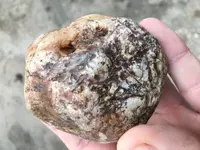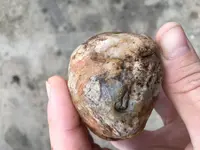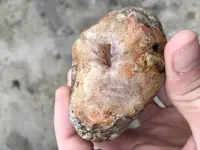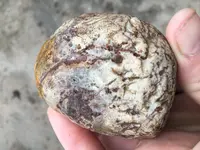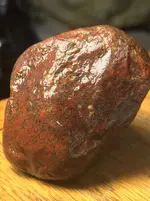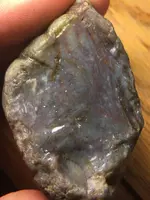I suggest you familiarize yourself slightly with mineral identification; Moesia has an excellent post on the subject. Use the search function.
Most of the time, yes. Chalcedony quite rarely shows a glassy luster, as quartz will. In fact, most chalcedony I've seen has a waxy luster to it.
To, again simplify it: Agate is a chalcedony with concentric banding, jasper is an opaque chalcedony.
If you are uncertain, you may accurately call it chalcedony. But you need to see the luster of the rock in question, as it is one of the properties we look for during identification. To see luster you need a freshly exposed surface, i.e. get a hammer to it!
The trade names are more a thing to aid in selling it, IMO.
Classification by how they were formed is important for rocks, not minerals.
For minerals we use the properties Moesia explained in his post, although certainly it can aid in identification.
Garnets for example are quite common in metamorphic rocks.
